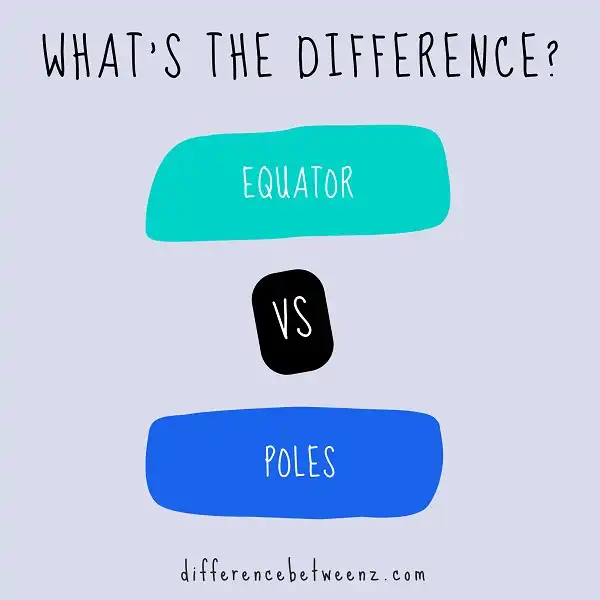Equator and Poles
If you want to know the difference between equator and poles, then you have landed at the right place. Below this post is all about the difference between equator and poles.
Equator
Equator is the point from which latitude is calculated. In other words, it is the latitude line 0 °. It is the imaginary circle that draws a line between the northern hemisphere and the southern hemisphere.
The term derives from the Latin phrase: ‘circulars aequator diei et noctis’, which means ‘circle that equals day and night’. It is one of the main imaginary circles and is drawn in relation to the axis of rotation of the earth. In simple terms, Equator cuts the spherical earth in half.
The line is drawn between South America and Africa, crosses certain number of islands and passes through 14 countries.
Polos
The poles consist of two points: North Pole and South Pole. They represent the main point where the axis of rotation is placed next to the surface of the planet, i.e., these points are crossed by the axis of rotation. The length lines run from pole to pole and more or less all are of the same length, but not parallel. The North Pole is 90 ° north of the Equator and the South Pole is 90 ° south of the Equator.
The direction of the poles of the Earth, relative to the sun, makes the difference as to the energy received in them and the Equator. The normal amount of solar radiation decreases from the equator to the poles. This is due to the low latitudes (near the Equator there are relatively large amounts of radiation throughout the year and in the high latitudes (near the poles), the angle of inclination of the rays of the sun next to the long periods of darkness in winter , resulting in a low amount of radiation in those areas.
Key Differences between Equator and Polos
- Equator is an imaginary circle, which divides the Earth in half; while the Poles are the two points (the North Pole and the South Pole) that are crossed by the axis of rotation of the Earth.
- In Equator the temperature is hot, while in the Poles it is cold.
- The gravitational acceleration is 9.78 m / s2 in the Equator, while in the Poles it is 9.83 m / s2.


